Table of Contents
Introduction
Real fur is being mislabelled as faux fur and sold online and in high street stores. That means that many people believe they are buying faux fur – also known as fake fur – but are in fact funding the barbarically cruel animal fur trade. The fur can be from any animals, including companion animals such as dogs, cats and rabbits.
Some of the retailers selling the items have a no fur policy, which is very commendable. However, they need to go further with their checks so people are not unknowingly funding the cruel fur trade.
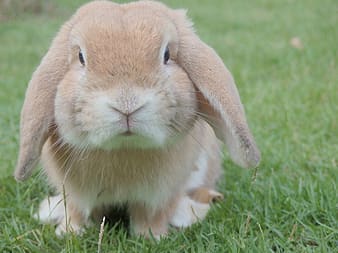
Why Is Faux Fur Mislabelled As Real?
Real fur is mislabelled as faux fur so it gets more sales. Real fur can be produced more cheaply by the animal fur trade than faux fur can be by others. This is because the conditions for animals on fur farms, especially in Asian countries, are usually unimaginably cruel. To harvest the fur, the animal is beaten and skinned alive, usually conscious.
It is thought that high street stores selling real fur labelled as faux fur are often unaware that the fur is actually real. The same goes for some online sellers. This is because the animal fur trade itself, or manufacturers, mislabel real fur as faux fur and sell it to wholesalers and retailers. Others online sellers knowingly sell it mislabelled. Retailers such as Boots, Tesco, Fat Face, Kurt Geiger, Romwe, Boohoo, T K Maxx, Not On The High Street, Amazon, and more have been caught selling real fur labelled as faux fur.
Image: This jumper from Boohoo was found to be real fur, when it was labelled faux. Many people who bought it did not want to fund the cruel animal fur trade. Credit: Boohoo
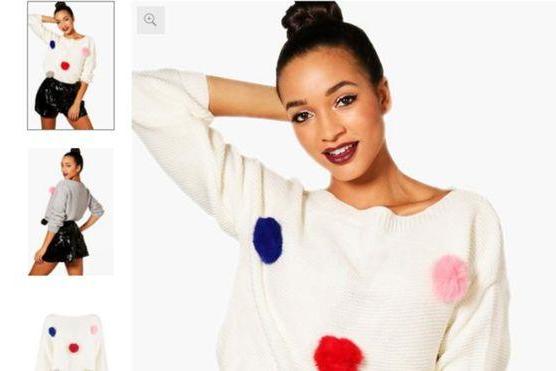
How To Tell Faux Fur From Real
There are certain checks you can do on the fur to see whether it is real or fake. This can prevent you from inadvertently funding the animal fur trade.
Method 1
Part the fur down to the bottom of the fibres. If it is faux fur, you are likely to see a sort of woven mesh. If it is real fur, you will instead find a skin, like leather.
Method 2
Look at the tips of the fibres. If they taper (narrow to a point) at the end, it is likely to be real fur. If not, they are likely to be faux fur. Bear in mind, however, that real fur can also be cut so the ends do not taper. Real fur is also more likely to all be different lengths.
Method 3
The Burn Method: Cut a small amount of the fur off and burn it with a lighter or match. If it frazzles and smells like singed hair, it is real fur. If it forms small plastic balls at the ends that feel hard between the finger and thumb, it’s faux fur. It could also be faux fur if it smells like burnt paper, and becomes a light, fluffy grey ash.
Method 4
The Pin Method: Stick a pin through the fur and its lining.Ā If it goes through easily, this suggests it is faux fur because the pin is sliding through a synthetic base. If it is hard to push through, or resists completely, it is likely to be real fur, as you’re trying to push through the leather lining to which the fur remains attached.
An additional, but less reliable test you can do is to feel the fur:
- Animal Fur – feels very soft to the touch, falls in a smooth and sleek line, passes through your fingers as if you’reĀ petting a cat.
- Faux fur – feels coarse and rough to touch, feels synthetic; can be sticky to touch inĀ humid weather, and it might have the same feel as a stuffed toy animal. It might stick to your hands if your hands are sweaty.
This is becoming a less reliable test because faux fur is being made to feel more and more like the real thing.
If in any doubt, don’t buy it.
Image: Alternatively you can refer to the image below to tell real fur from faux fur. Source
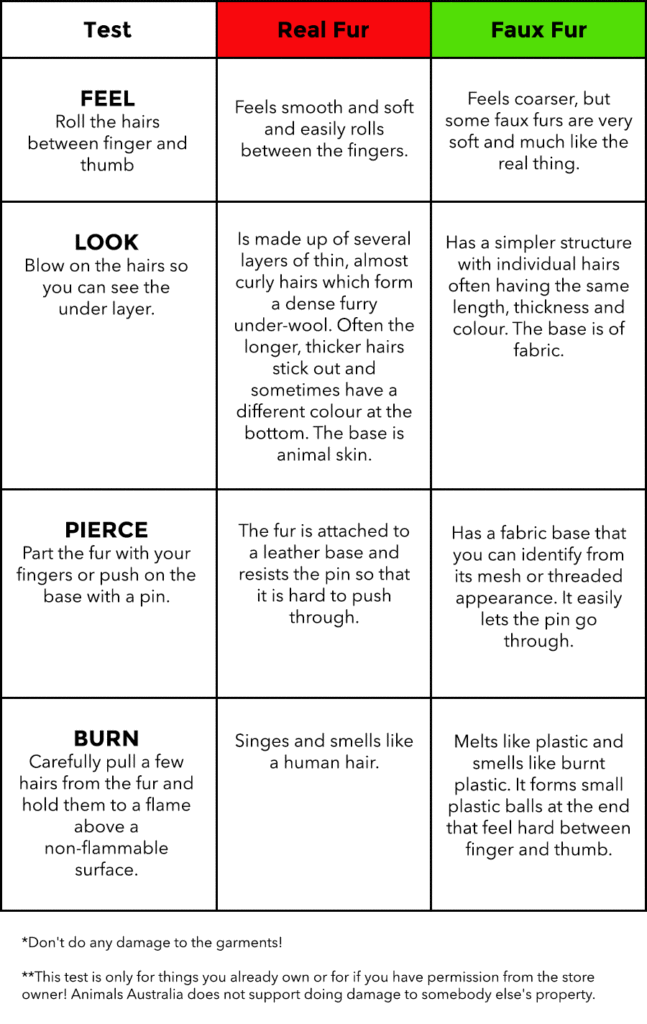
What To Do If you Have Unknowingly Funded The Animal Fur Trade
After doing these tests on your “faux” fur items, you may find you have inadvertently funded the animal fur trade. In these circumstances, you can take these steps:
- Complain to the retailer
- Demand a refund
- Demand that they take more care to ensure their “Faux” fur really is faux in future.
- Shame the retailer on social media and let them know.
- Let the media know
To shame the retailer on social media, you can comment on their page, and in related groups.
If enough people do these things, the retailer will make sure they take more care in future about checking that their fur really is faux. That means fewer animals will suffer in the cruel animal fur trade.
If you get an unsatisfactory response, it may even be worth speaking to a lawyer.
Image: This headband on Amazon was one item found to contain real fur. People who bought it did not realise they were supporting the animal fur trade. Credit: Amazon
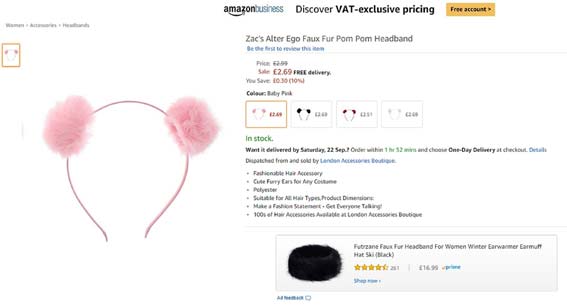
How Else Can I Help Save Animals From Cruelty?
On this website there are many ways to help stop animal cruelty and suffering. You can find out how to save companion animals from suffering too. You can find out the one single thing you can do that will make the biggest difference for both animals and the planet. There are also many ways you can see to earn and raise funds to help animals for free! And if you enjoy crafting, there are many ways that you can use that to help animals. If you need gifts to buy and would like a portion of the money to help animals, have a look at our fundraising store.
You can help animals by sharing the information you find on this website, and other animal advocate websites. Together we can make a big difference for animals!
Image: The fur could even be of companion animals, like cats, dogs, or rabbits.
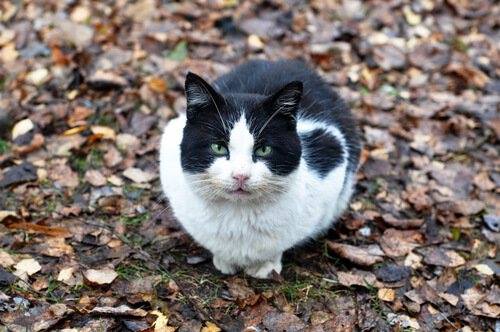
Which Tests Do You Find The Most Reliable?
Use the comments section below to let us know which you find to be the most helpful tests when identifying real fur from fake fur, or tell us about when you have been sold real fur assured it was fake fur. Spotted a mistake? Let us know about that too.
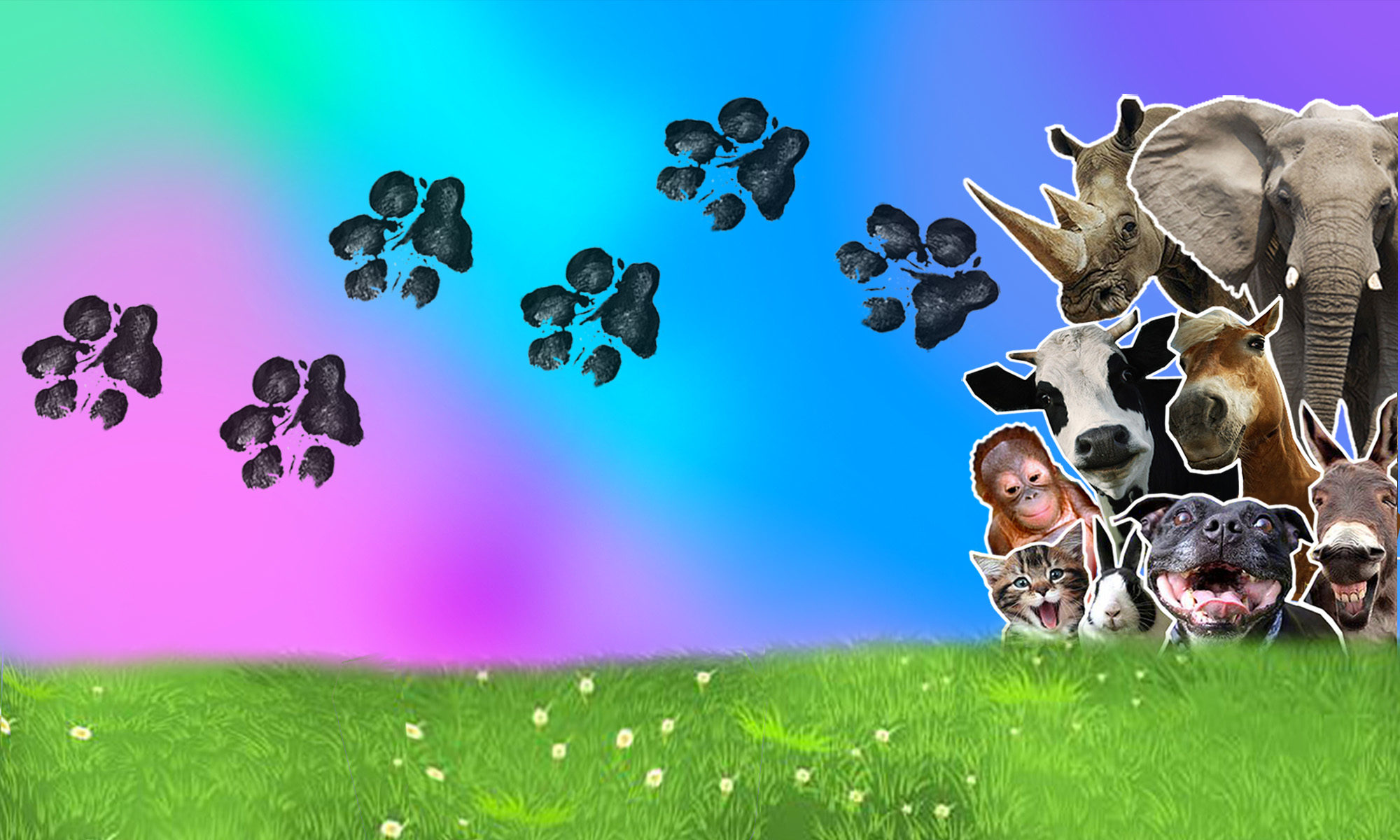
Shut down fur farms!